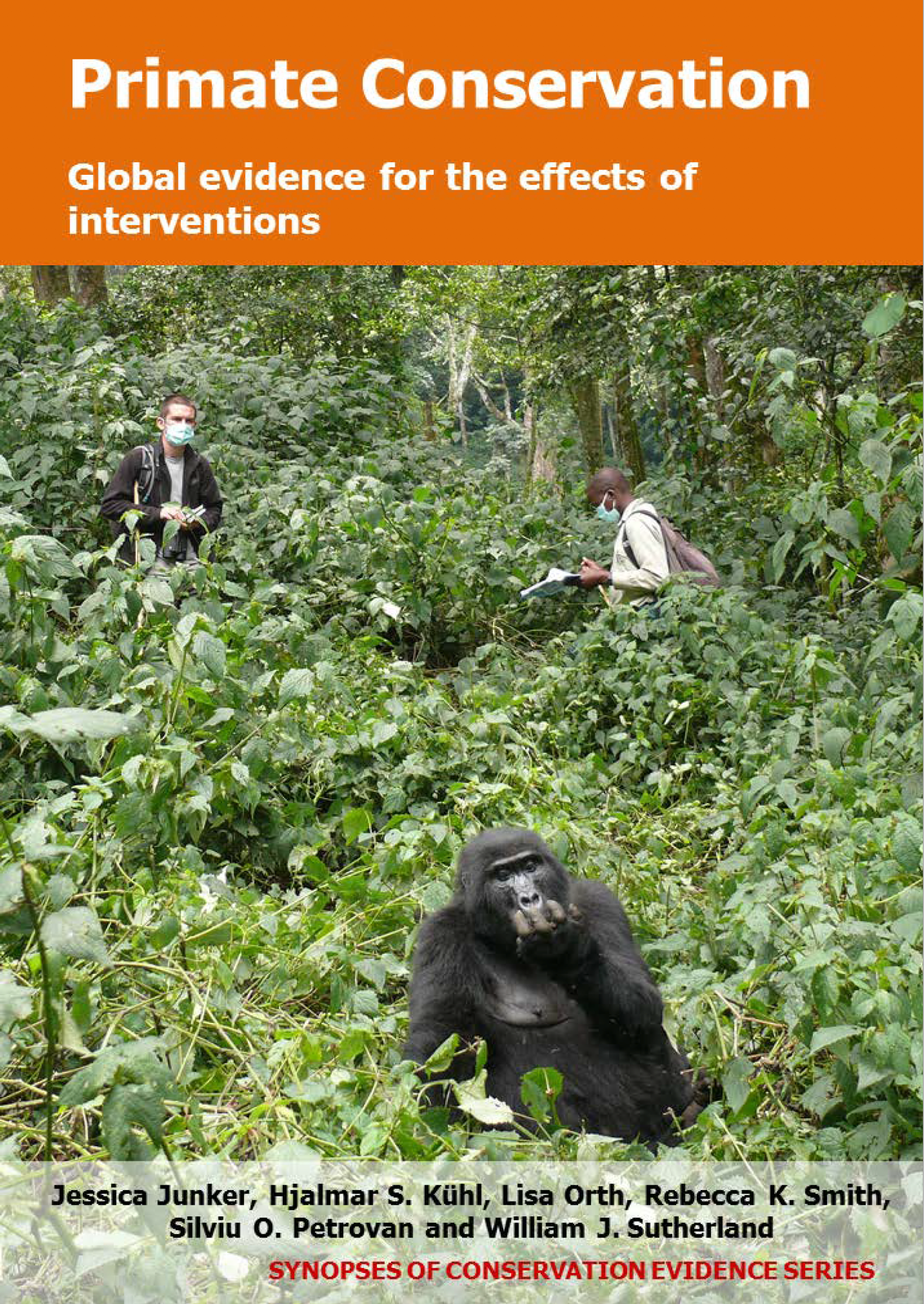Limit time that researchers/tourists are allowed to spend with habituated animals
-
Overall effectiveness category Unknown effectiveness (limited evidence)
-
Number of studies: 2
View assessment score
Hide assessment score
How is the evidence assessed?
-
Effectiveness
40% -
Certainty
10% -
Harms
0%
Study locations
Supporting evidence from individual studies
A controlled study in 2004-2005 in a mosaic of logged and secondary tropical forest in Bukit Tigapuluh National Park, Indonesia found that reintroduced Sumatran orangutans Pongo abelii that spent only a limited amount of time with their caretakers along with other interventions, acted more like wild orangutans after release compared to individuals that had regular and close contact to caretakers. The behaviour of the three non-habituated orangutans with minimal human contact resembled that of wild orangutans more than that of the five habituated individuals in the way that they built nests, their food choice and canopy use. Furthermore, the former spent more time interacting socially with previously released orangutans. Non-habituated orangutans were released after they spent 6-month at a sanctuary to acclimatize. Human-habituated individuals were kept in semi-free conditions for 7-9 months prior to release where staff members guided them to the forest on a daily basis and tried to foster natural behaviour. The study does not distinguish between the effects of the different interventions mentioned above.
Study and other actions testedA controlled before-and-after study in 1967-2008 in tropical montane forest in Volcanoes-, Mgahinga-, and Virunga National Parks in Rwanda, Uganda, and the Democratic Republic of Congo found that the mountain gorilla Gorilla beringei beringei population that was regularly visited by tourists and researchers that were restricted in the amount of time they were allowed to spend with them alongside ten other interventions, increased over time. Annual population growth was 4.1%, resulting in an overall population increase of 168% over 41 years. No statistical tests were carried out to determine whether this increase was significant. One-hour visits were made to each gorilla group daily by tourists. Researchers typically spent no more than four hours with the research-habituated groups. As part of the ecotourism- and research programmes, gorillas were habituated to human presence, where visitors/researchers had to follow strict health procedures; these included keeping a safety distance to the gorillas, wearing face-masks, ensuring that visitors/researchers were healthy, disinfecting visitor’s/researcher’s clothes, boots etc. Gorillas were continuously monitored by vets and received medical treatment if necessary. When gorillas died, their cause of death was clinically determined. The study does not distinguish between the effects of the different interventions mentioned above.
Study and other actions tested
Where has this evidence come from?
List of journals searched by synopsis
All the journals searched for all synopses
This Action forms part of the Action Synopsis:
Primate Conservation
Primate Conservation - Published 2017
Primate Synopsis





)_2023.JPG)














